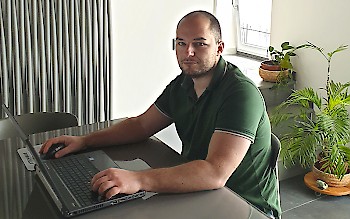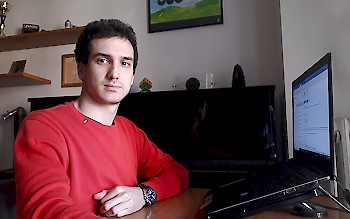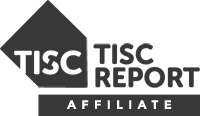Since some weeks, due to the Covid-19 pandemic, many industrial operations and sites have come to a halt. Something that did not stop due to the lockdown in many Countries is the planning, maintenance and construction of solar power plants, even though the pandemic is disrupting supply chains and the day-to-day business reality of solar operators worldwide. The related Energy Storage sector is one of the fields in which our Industrial division’s customer team strives for timely and efficient solutions for our clients.
Another thing that didn’t pause is our engineering team’s willingness to help our customers to come up with the best possible solution to address their needs. In this article, we talk to two members of the Industrial division engineering team, Patrick Bellezza and Samuele Trinari, who are specialized in projects in the field of Electric Vehicles Infrastructure and Energy Storage, to understand their point of view on the matter of codesign.
It is clear that codesigning can drastically improve products and provide a higher flexibility in resolving problems, but researches now focus also on the emotional benefits of codesign activities for the customer and the company producing the parts. Studies made on the effect of codesign activities on the emotional bond between the customer and the product show that codesign drives customer–product attachment and customer–company identification, while at the same time creating a stronger bond between client and supplier, and an increased sense of purpose in the company producing the part, who is also, to some extent, creating and engineering the product.
By codesigning their products, customers serve as active partners of the company, which implies shifting roles in the production process. At FAIST, we view codesign as a cooperation between our firm and its individual customers during the configuration process of a customized product, which is what we do best.
 |
 |
| Patrick Bellezza | Samuele Trinari |
First of all, please present yourselves, telling our readers about you academic background and your current role in FAIST.
Patrick: Hello to all! My name is Patrick Bellezza and I am part of the RNE Customer Team of FAIST Industrial. After High School, I started studying Mechanical Engineering at the University of Perugia, obtaining Bachelor and Master Degree within 5 years. Then I invested one year remaining in the University as research associate while joining the Order of Engineers. In 2013 I started working for FAIST as Application Engineer, so taking care of all technical documents and analyses needed for a safe start of production; since 2017 I also assumed the role of Project Manager taking also responsibility for timelines of the projects, the coordination of the various functions within FAIST and our interfaces at the customer side.
Samuele: I am Samuele Trinari, I am 28 years old and I joined the RNE Customer Team about two years ago as Application Engineer. My main tasks are to analyze projects, technical drawings, discuss alternatives with the customers and define processes to build and realize products mainly related to EV infrastructure. I got my master's degree in Mechanical Engineering in 2017 at Università degli Studi in Perugia, where I could learn the basics of technical drawings and processes technology. After a short period in which I took the State exam and had an experience as maintenance assistant in a large Italian company operating in the thermal management sector, I was able to deepen the acquired knowledge thanks to the role I have now in the company.
What do you think is the main added value of codesign?
P.: I believe that the main benefit is the streamlining of a new project’s development. Codesigning from the beginning allows to identify future bottlenecks and opportunities for improvement during the early design stage, when the design can still undergo major changes. Down the line, this leads to a shorter development time and opens up to the possibility of relevant savings that cannot be matched by a non-codesigned product. A successfully codesigned project will also result in better relationships between customer and supplier, based on trust and shared knowledge that will improve the results of future collaborations.
S.: There are more levels of added values, but the main one is that codesign often leads to define technical solutions that are more efficient and economic, since modifications and alternatives are suggested in the first stages of the analysis and evaluation of a new project, when most of the constraints of the finished product are not completely defined yet. Codesign helps also to have collaboration, continuous dialogue, sharing tips and build stronger relationship with the customer.
Are there challenges in this kind of process, or mainly pros?
P.: At the beginning of the projects, there are always many challenges to face, like understanding the needs and goals of a new design and how to preserve them against the requirements for a safe mass production. Once the development process goes on, and the issues start being overcome with shared solutions, the advantages of codesigning start to unfold, resulting ultimately in a smooth start of production with satisfaction on both FAIST and customer’s side with a reliable and competitive product ready to take on the market.
S.: There are many challenges because usually the result of codesign is a trade-off between what the customer preliminarily defines, and what is achievable with an efficient and reliable process. The main one is probably to figure out what the real customer’s requirements and constraints are, and how it is possible to take them in account and to satisfy them in the best way, foreseeing and avoiding, as far as possible, issues and problems later in the production stages.
What are your main focuses while designing a product internally, and how different they are from the ones you have to take into account while codesigning in collaboration with a customer?
P.: The main focus of the development process remains the same in both cases. Given a set of objectives for a new product, we’ll work in order to find and execute the most cost-effective way to achieve the design targets while having a reliable process. The difference between an internal and a codesigned project is the need in the latter to identify all the implicit expectation the customer has on the new project, and to keep an open mindset for all the needs that will arise later during the development process. Another important topic for codesign is to have a clear and open communication between both parties, ensuring to keep the focus aligned on the project’s overall targets.
S.: The focus of the design of an internal product with defined characteristics is usually from the beginning how to realize it with the most affordable and reliable process. Codesign instead can start from an already partially defined group of constraints or specifications, which sometimes need to be reviewed in order to improve efficiency on every possible aspect.
How long does it take to design and engineer a product with its productive process on average? Is the lead time longer or shorter if you take the codesigning approach?
P.: Depending on the complexity of the product and the market requirements, the development of design and process can be between 6 months and 2 years from early design stage to mass production. Using codesign the overall lead-time is reduced significantly as a lot of “design→ Feasibility/Cost KO→redesign” loops are avoided or solved with minimal resources investment. Another big benefit is the fact that it makes it possible to avoid technical blocking points in later design stages, where a technical issue could compromise the overall result.
S.: At first codesign can take time, but it allows to avoid or fix issues and problems in the later phases of prototyping and production. Therefore, on the long run is desirable to use a codesigning approach, because generally it can achieve the shared goals with less money, less resources and less time. This time however, depends on products characteristics, complexity and specifications; for example, a few projects of big EVI enclosures that I have been following are still improving after two and a half years from the early prototypes.
For what type of product do you believe codesigning is a must?
P.: I believe that codesign is recommended for any kind of customized product; becoming necessary wherever cost effectiveness, time to market and innovation are important drivers for the success of the project. A codesign relationship between customer and supplier reinforces the mutual commitment between the parties, while the shared benefits enhance the competitiveness allowing them to stay at the forefront of the market.
S.: Probably every complex and custom product that requires several different phases and a specific know-how of the supplier company would have to be engineered and managed with a codesign approach. This method helps obtaining a shared solution that respects the many predefined requirements. The possibility to give, this way, an innovative contribution to remove the non-necessary complexity generally leads to important savings, reflected directly to our client and at the end to the final customers, which also benefits of the functionality of the produced goods.
Convinced yet, that codesign is the way to go?




